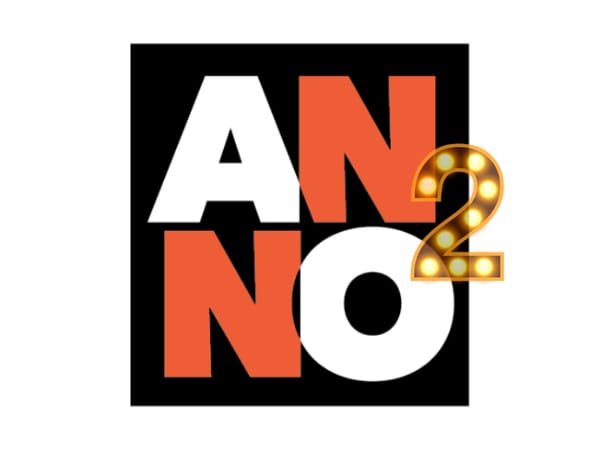Got no time to train new reporters? Check this out.
You can outsource critical training if you’ve got access to Earn Your Press Pass.

By Emily Sachar
When Michael Glenn, 17, decided to start his own newspaper to compete with what he felt was the deficient outlet in Hutchinson, Kansas, he faced one major hurdle. He had never reported or written a story and had never taken a journalism class. Then, he caught the ear of Joey and Lindsey Young.
Creators of an on-demand digital journalism course called Earn Your Press Pass, the Youngs offered their program to Glenn gratis. Soon, he was off to the races. Today, the Hutchinson Tribune is publishing four stories a day with six contractors. Glenn credits the lessons he inhaled on EYPP for his start in journalism as a high school junior.
“It’s a boot camp for journalists,” Glenn says. “It gives you the essential ingredients to be a local reporter.”
Earn Your Press Pass (EYPP), a video series of 38 lessons covering eight overarching topics, was launched in September 2021 as a practical source for members of the Kansas Press Association, of which Joey Young was president in 2020. But word quickly got out, and now 21 press associations around the United States have each paid $2,000 a year to allow their members to access EYPP.
Separately, a newspaper chain in Green Bay, Wisconsin, requires every semester-long intern (24 each year) to complete the course.
“The program is a win-win for both the intern and our publication, as it provides a solid background on what is needed and expected to be successful in this type of career,” said Kris Leonhardt, Multi Media Channels Senior Editor and Internship Program Director for the weeklies Green Bay Press Times and Kewaunee County Star-News.
The Institute for Nonprofit News (INN) also bought in last year and began making the program available in February. To date, 50 people across eight of INN’s 400-plus member news organizations have taken the course.
“It’s been an invaluable resource for our members, rural newsrooms in particular, who experience unique challenges attracting talent,” said Alana Rocha, Director of INN Collaborations and Rural Initiatives. Larger outlets take advantage as well, she said, offering it as a streamlined course that lays the groundwork for interns and other young new hires.
The rural pipeline problem is indeed at the heart of EYPP’s origin story. When the Youngs began building their own for-profit newspaper company, Kansas Publishing Ventures (a network of three newspapers in South Central Kansas), they noticed the dearth of talent willing to journey their way. Conversations with the University of Kansas-Lawrence to entice the development of a collegiate training program that would funnel graduates into the West Kansas market to work came to naught.
“They wanted to make it very complex,” Joey recalled, “and we wanted to make it turn-key and simple.”
One evening, over dinner, Joey turned to Lindsey, pondering the challenge of crafting the course he had in mind.
“Well, I can do that,” Lindsey boldly declared.
She had taught journalism, yearbook, drama, and English at the high schools in Andale and Haven, Kansas, for 10 years. So, she began to set up the course outline, using tips from colleagues and friends. Less than a year later, the course was complete, and it launched with a price tag of $250 per customer.
One goal was breadth: hitting topics that cub reporters need to know to grab a notebook and report their first story. Lindsey, who began her career in journalism in 2012 as the part-time copy editor for The Clarion in Andale also wanted to keep things tight and compact.
“We all had been sitting through a lot of Zooms,” the result of the Covid pandemic, she told Local News Blues. “I also wanted to make it personable and conversational so people wouldn’t fall asleep watching it.”
EYPP includes six lessons on interviewing, eight on types of stories ranging from news to sports features, six on writing techniques, three on effective editing, four on journalistic ethics, and five on photography. The course also includes one lesson on AP style and two on journalistic jargon.
In each recorded lesson, Lindsey sits at the comfy leather chair in her home office, often dressed in a t-shirt. A bookshelf with heirloom treasures sits behind her. She turns on the video camera and talks in a chatty style. Then, in post-production, she drops in comical video snippets that bring levity to the topic.
The tone is straightforward and self-effacing. For a story on covering spot-news sports, a topic that Lindsey concedes is far from her sweet spot, she inserted a 2017 sketch from Saturday Night Live starring Cecily Strong and Chance the Rapper superficially describing the gear of an ice hockey goalie. The message: Lindsey’s take for her own local papers might be similarly crude, but she can learn, and so can the viewer. For a piece on the importance of using relevant sources, she dropped in a video of a 4-year-old child who goes rogue with his impertinent remarks. The message: try to ensure you have the right interview subjects for each story.
Some lessons have PDF handouts, like the two-parter on newspaper jargon. And while there are no tests, quizzes, or homework, viewers can watch Lindsey do a mock interview with Joey, who explains his bowling hobby, then read her notes and the newspaper story she created. She invites the viewer to play along, taking notes as she conducts the interview, and try writing up the story, too.
The course is a series of how-tos augmented with hundreds of tips. When covering sports, avoid using language like “our team,” Lindsey advises. Keep yourself out of the story. Avoid writing play-by-plays and leave that instead to sports announcers. When seeking interviews, set deadlines with sources. Be relaxed and friendly but assertive. Always check names and job titles. After an interview, refine your notes by adding observations that touch on tone and mood or the sartorial style of the subject. In an 18-minute segment, one of the longest in the course, Lindsey also offers detailed explanations of “off-the-record” and “deep background” and coaches against guaranteeing anonymity to sources without a consult with a trustworthy editor.
And the course provides a quiet plug for small-town and rural news operations.
“Even if people say small towns are boring, there is so much more out there than you ever imagined,” Lindsey intones in one episode.
The Youngs also see a use case for the course around retired community members who can be pressed into service as journalists.
“You can home-grow reporters if you stop thinking about how we did things in the 1980s,” says Joey. “If you can’t get those kids, don’t give up. Recruit a bartender or a barista. Teach them what they need to know and put them out there.” Such individuals, he counsels, know people and have institutional knowledge.
So successful has the news-training course become that the Youngs are now developing two new courses.
One, to be released this fall, will be focused on advertising and includes 10 modules that cover everything from the lingo of ad sales – column inch, camera-ready, classified display – to building relationships; separation of powers between publishing and editorial; making the sale; finding customers; and needs analysis selling, the process of identifying a customer's requirements for a product or service.
Another course on which development has not yet begun will give advice on starting a newspaper operation, covering everything from business choices to newsroom operations.
Both programs, like EYPP, are designed for the small-town operation.
“Even though we hear there’s no journalism in rural America, we’ve been able to feel pretty hopeful about the industry,” said Joey Young. “That has been awesome.”
Emily Sachar, an award-winning journalist several times over, is the Founder, Editor-in-Chief, and CEO of The Daily Catch, a nonprofit, nonpartisan online newspaper serving the Hudson Valley towns of Red Hook and Rhinebeck, New York. She is also a member of the Local News Blues editorial board. Read more at the Local News Blues contributors page.





